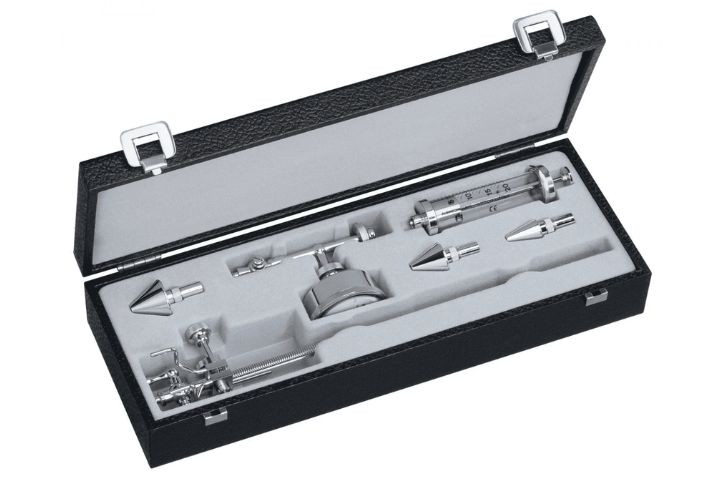A hysterosalpingography is a type of x-ray that looks at a woman’s uterus (womb) and fallopian tubes. This type of x-ray uses a contrast material so that the uterus and fallopian tubes show up clearly on the x-ray images. The type of x-ray used is called a fluoroscopy, which creates a video image rather than a still picture. Riester’s salpingograph is used in this process to check fertility. It allows an exact x-ray contrast image to be made of the uterine cavity and the fallopian tubes and is used as a simple test for tubal patency.

Pertubation hysterosalpingography is used for contrast x-rays of the cervix, the cavum uteri and the fallopian tube lumen. After injection of an x-ray contrast media into the cervical canal, the x-ray will follow the contrast media filling the cervical canal and the cavum uteri first, followed by being discharged retrograde through the three tubes into the free abdominal cavity. Contrast means recesses in the cervical canal or the cavum uteri are an indication for intra-cavitary or occupation of intra-cavitary spaces (by polyps, myoma, for instance). Congenital misshapes of the cervix (i.e. uterus subseptus) are particularly clear. Filling the fallopian tubes allows assessment of the patency of the tubes, but may also be used for assessing important changes in the tube function, such as a variation in thickness, stenoses or sactosalpingual formations. Pertubation is used for testing the tube patency. Connection of a manometer allows testing of the pressure required for pertubation. Normally, the cavum uteri will widen at a pressure of 40-60 mmHg. From a pressure of 70 mm Hg, the distension media (liquid and gaseous) will penetrate into the tube lumen and into the abdominal cavity. Hysterosalpingography and pertubation have a therapeutic effect in sterility therapy. One quarter to one third of all cases show that conception is effected within 4 months after intervention.
